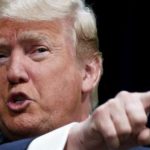I’m delighted to pass along this book review by Prof. Jacob Mchangama (Vanderbilt), who is the author of Free Speech: A History from Socrates to Social Media and other works on free speech.
[* * *]
Mary Anne Franks claims that her new book, Fearless Speech: Breaking Free from The First Amendment, “offers a different and bolder perspective on free speech that takes power, harm, and history seriously.” In this post (adapted from a thread on X) I provide a brief critique of Franks’ thesis and methodology.
Franks argues that “First Amendment norms have consistently exalted and elevated reckless speech that benefits the powerful at the expense of the vulnerable. This exploration peels back the rhetoric of free speech to expose how it has perpetuated and maintained a neo-Confederate ideology of white male supremacy.”
Franks rightly points out that proponents of slavery and white supremacy systematically censored proponents of equality. But she conveniently omits that many of those whose voices were quashed were deeply committed to a universalist and principled conception of free speech. Take Frederick Douglass, who is entirely left out of the book. Douglass insisted that “the right of speech is a very precious one, especially to the oppressed” and that “[n]o right was deemed by the fathers of the Government more sacred than the right of speech.” To Douglass, free speech was “the dread of tyrants” and critical to the abolitionist movement.
Douglass also famously argued, “A man’s right to speak does not depend upon where he was born or upon his color. The simple quality of manhood is the solid basis of the right—and there let it rest forever.”
In the South, which criminalized abolitionist speech, Douglass would have been tortured and executed for his “incitement.” In the North, where anti-slavery speech was better protected, he became a sensation who moved hearts and minds. In reflecting on Douglass’ 1841 speech in Nantucket, William Lloyd Garrison wrote, “I shall never forget his first speech at the convention — the extraordinary emotion it excited in my own mind—the powerful impression it created upon a crowded auditory, completely taken by surprise—the applause which followed from the beginning to the end of his felicitous remarks. I think I never hated slavery so intensely as at that moment.”
In her book, Franks jumps from Whitney v. California (1927) to lynchings and KKK terror to the Brandenburg decision in 1969. She argues that SCOTUS upheld the conviction of Anita Whitney under the “bad tendency” test but moved to a “reckless speech” standard in order to overturn the conviction of a KKK leader who threatened “revengeance” against Blacks and Jews in Brandenburg v. Ohio (1969).
But along the way, she forgets to mention landmark cases often brought by civil rights activists expanding their right to speak and breathing new life into the First Amendment to the benefit of all Americans. In Herndon v. Lowry (1937), the U.S. Supreme Court overturned the Georgia Supreme Court’s upheld conviction of an African American who possessed Communist publications In NAACP v Alabama (1958), the court ruled Alabama violated freedom of speech and assembly by attempting to access membership lists of the NAACP. In Garner v. Louisiana (1961), the court ruled that Louisiana could not convict peaceful sit-in protestors under state’s “disturbing the peace” laws. Edwards v. South Carolina (1963) found that the Constitution forbids state officials from forcing a crowd to disperse when legally marching for civil rights at the state house. And New York Times v Sullivan (1964) overturned the Alabama Supreme Court’s defamation decision against supporters of Martin Luther King, who placed an ad in the New York Times, limiting the ability of public officials to sue for defamation.
Franks also omits that Justice Thurgood Marshall—a civil rights icon and the first black Supreme Court Justice—voted to overturn Brandenburg’s conviction and establish the Brandenburg test that protects hate speech. Was Marshall also duped by neo-confederate ideology?
Moreover, two of the ACLU lawyers working on the Brandenburg case were Allen Brown, who is Jewish, and Eleanor Holmes Norton, an African American woman who went on to become a D.C. delegate to Congress (as a Democrat, not a member of the KKK). In an interview with C-SPAN, Holmes Norton argued why standing up for the neutrality of speech was important during the civil rights era and why “sometimes I gotta defend people who would not defend me.”
Franks briefly cites civil rights leader John Lewis on democracy but omits his famous quote about how the First Amendment protections—won by the Civil Rights movement in Supreme Court cases such as those above—bolstered the fight for racial equality: “Without freedom of speech and the right to dissent, the Civil Rights Movement would have been a bird without wings.”
Franks devotes a section to Terminiello v. Chicago (1949), which overturned the conviction of a defrocked Catholic fundamentalist priest who engaged in antisemitic speech and riled up a hostile crowd. As has become fashionable among First Amendment detractors, she cites Justice Robert H. Jackson’s dissent about how the decision risked turning the Constitution into a “suicide pact.”
But she omits that the Terminiello decision was cited in Edwards v. South Carolina to protect the rights of 187 Black peaceful civil rights protestors arrested by the police in Columbia, SC, over a decade later. A perfect example of the rich dividends of principled free speech.
Franks also argues that “[t]he civil libertarian ‘bad precedent’ theory of censorship similarly relies on a depoliticized, ahistorical account of reality that erases acts of oppression by powerful groups in the past and assigns a false power to vulnerable groups in the present.” But in fact, Justice Jackson’s opinions, such as in Dennis v. United States (1951), justified the restriction of unpopular political groups like communists during the Red Scare. In that case, Jackson argued,
“Also, it is urged that since the conviction is for conspiracy to teach and advocate, and to organize the Communist Party to teach and advocate, the First Amendment is violated, because freedoms of speech and press protect teaching and advocacy regardless of what is taught or advocated. I have never thought that to be the law.”
However, thoughtful Jackson’s thinking—informed as it was by his time as Chief Prosecutor at the Nuremburg Trial—his “balanced” free speech theory has (so far) been discredited by the actual history of the US. Had Jackson’s First Amendment theory been dominant, radical antiracist far-left groups that Franks may believe engage in “fearless speech” could well have been banned.
Franks argues that free speech protections should “look to the most exploited members of a community to guide our legal and social choices,” citing Gandhi’s words to consider “the poorest and weakest members of society.”
But like Douglass, Gandhi did not see a contradiction between free speech and equality. Gandhi called freedom of opinion and association “the two lungs that are absolutely necessary for a man to breathe the oxygen of liberty.” In his 1922 sedition trial, Gandhi passionately pleaded that we cannot legislate people into abandoning unpopular beliefs:
“Affection cannot be manufactured or regulated by law. If one has no affection for a person or system, one should be free to give the fullest expression to his disaffection, so long as he does not contemplate, promote or incite to violence.”
Gandhi’s conception of the limits of free speech was far more protective than what followed under the First Amendment at the time.
Franks stresses that free speech is more important than the First Amendment. She rejects the viewpoint-neutral model and argues instead that democratic societies have a responsibility to decide what sort of speech should be protected and promoted. She writes:
“In place of abstract platitudes about the virtue or necessity of defending ‘controversial’ or ‘unpopular’ speech above all” the view of free speech presented in this book calls for rigorous investigation into the material facts and circumstances surrounding the speaker, the speech, and the impact on other people. This book emphasizes the distinction between what speech a democratic society should protect … and what speech a democratic society should promote ….”
But it’s not just First Amendment scholars and Supreme Court justices who have warned about the dangers of this subjective approach to determining good vs. bad speech. Nelson Mandela—who spent 26 years in prison—learned firsthand about the dangers of giving leaders this power:
“No single person, no body of opinion, no political or religious doctrine, no political party or government can claim to have a monopoly on truth. For that reason truth can be arrived at only through the untrammelled contest between and among competing opinions, in which as many viewpoints as possible are given a fair and equal hearing. It has therefore always been our contention that laws, mores, practices and prejudices that place constraints on freedom of expression are a disservice to society.”
Lastly, Franks devotes a chapter to how the First Amendment harms women, called “Burning Women.” Here’s the crux of her argument: “[W]hen it comes to women’s speech, the protection of the First Amendment is little more than hollow rhetoric …. By contrast, the First Amendment is always available to defend men’s misogynist expression and sexual exploitation.”
She begins the chapter with an in-depth discussion of the Amber Heard v. Johnny Depp defamation trial to show how the First Amendment has been used to silence women who speak out against abuse. The merits of that case aside, it seems counterproductive to include an entire section on a particular defamation case in which a jury resolved a dispute between two celebrities without mentioning the First Amendment’s protection of the right to criticize public officials and prominent figures. See several recent cases here, here, here, and here where robust First Amendment protections prevented frivolous attempts by powerful figures to silence critics.
In fact, Franks also only cites New York Times v. Sullivan (1964) in reference to Florida Gov. Ron Destantis’—dangerous—desire to change defamation law. But there’s no mention anywhere that this seminal decision protected the rights of civil rights activists to criticize public officials in the segregated Deep South, where all-white juries routinely sided with litigious white officials to silence dissent.
Also omitted is a discussion of how women have been some of the First Amendment’s staunchest defenders. The Foundation for Individual Rights and Expression recently chronicled 42 women who argued for free speech protections in front of the Supreme Court. These champions helped pave the way for others. In 1919, women were arrested for burning an effigy of Woodrow Wilson outside of the White House demanding the right to vote. But in 2017, thousands of women marched in pussy hats shouting slogans against President Trump with First Amendment protection from the police.
Eleanor Roosevelt, the first Chairperson of the UN’s Commission on Human Rights, was a formidable advocate for free expression. She argued against embedding hate speech restrictions in international human rights law, cautioning that such laws could be abused by authoritarian regimes to suppress dissent. Roosevelt foresaw the dangers of placing power in the hands of leaders to police expression, warning that criticism of public authorities might be unfairly labeled as “hate.” This stance directly countered proposals from the Soviet Union and its allies, who sought global prohibitions on hate speech to shield their regimes from opposition.
One of the early champions of free speech and equality was a woman: the French playwright and protofeminist Olympe De Gouges. She was a pioneering voice in defense of women’s rights, opposition to slavery, and the plea for freedom of expression. In her 1788 play The Slavery of the Blacks, De Gouges attacked the institution of slavery, and her Declaration of the Rights of Woman and the Female Citizen insisted that “woman has the right to mount the scaffold; she must equally have the right to mount the tribune.” Ironically, she met her end at the guillotine, executed by the new rulers of Revolutionary France—figures who, once heavily censored under Throne and Altar, now persecuted their own opponents even more fiercely. All in the name of safeguarding liberty and equality.
Mary Anne Franks may offer what she calls a “different and bolder perspective on free speech,” but her approach ultimately falls short in her stated goal of examining “power, harm, and history seriously.” The First Amendment is not a foolproof guarantee against intolerance or injustice. However, it has repeatedly proven instrumental in advancing equality and restraining oppression—notably empowering civil rights activists, marginalized communities, and dissidents who transformed American society. Franks’s critique overlooks these substantial achievements, casting the First Amendment as an enabler of injustice, when history shows it has often been a powerful tool for creating a more tolerant and just nation.
[* * *]
Here is Prof. Franks’ response to Prof. Mchangama’s earlier Tweeted criticisms:
In all sincerity, I am delighted to finally see a critical take on my book by someone who has actually read it and which doesn’t involve threats of violence, racial slurs, or comments about my shoes. So thank you, @JMchangama, for that!
That being said, the critique you offer is only interesting if I had in fact claimed that the First Amendment “only” protects the powerful. But I do not claim this. In fact, I note several cases & principles that are notable for protecting vulnerable & dissenting individuals.
But so many books about the First Amendment are essentially hagiographies—the cases you cite and the points you make are all very well-trodden ground in the civil libertarian orthodoxy. What is certainly true is that my book does not repeat that party line.
My book is a critique of First Amendment law. But it is not a condemnation of it. My thesis can be summed up this way: the First Amendment is neither necessary nor sufficient to protect free speech. The evidence of its limitations are all around us.
Members of Congress are conducting McCarthyesque hearings of university presidents. They’re threatening researchers and harassing students. Republican politicians are banning books and censoring what can be said in classrooms.
Government officials are calling student protesters “monsters” that must be “slain.” The Republican candidate for Vice-President openly declares that “professors are the enemy.” Teachers, librarians, and school board members are being doxed and harassed.
Women who speak out about sexual violence are being subjected to ruinous lawsuits and coordinated online abuse campaigns. Black Lives Matters protesters are being surveilled, beaten, arrested, and sued.
The First Amendment may eventually be of some use in some of these cases some of the time. No one denies that. But it cannot be said that the First Amendment, right now, is truly allowing free speech to flourish—at least not for those challenging racial and gender injustice.
I understand that many people are satisfied with this status quo because they are confident that their right to free speech is protected. But I care about more than my own rights, or the rights of people like me. I care about everyone’s.
And that’s why the heart of the book—the part you don’t mention—is focused on fearless speakers. In my view, it’s not the law, or lawyers, who are the true heroes of free speech—it’s the people who risk everything to speak truth to power even though the law fails them.
It is true that my book is a hard read for anyone who worships the First Amendment, or thinks that the United States is the best of all possible worlds for free speech. It’s always hard to sit with criticism of something we’ve been taught since childhood to revere.
But for anyone who isn’t afraid of thinking beyond the law, or thinks that there might be better and braver ways to think about free speech than what the ACLU or FIRE tells you to think, you might find my book worth reading.
[* * *]
And here in turn is Prof. Mchangama’s response:
Thanks, @ma_franks, for responding to my critique.
First off: I’m truly sorry that you have been subjected to threats and racist slurs for raising your voice. If “defenders” of free speech can’t tolerate criticism of that concept, they’re in the wrong business. I hope these comments are “mere” trolls and not serious threats against you.
That said, I am a little baffled by your reply. You mention many serious and considerable challenges to free speech right now — from book bans to attacks on free speech on college campuses to clamping down on the right to protest.
Most of us “First Amendment worshipers” agree that these are all bad developments, which is why civil society and legal defense organizations — including
@thefireorg — are playing an important role in fighting these infringements on our fundamental rights in the public discourse and in the courts.You seem to imply here that the existence of these injustices proves that the First Amendment isn’t working as intended. But history has shown us time and again that these challenges expand and enhance our First Amendment protections when free speech defenders fight back. That, to me, is a feature and not a bug of the U.S. system.
I do, however, agree that the First Amendment is not in and of itself a guarantee for tolerance and dissent. That’s where parrhesia comes into play: A civic commitment to the tolerance of dissent. But note that the Athenians thought that freedom, democracy, and equality went hand in hand and did not limit parrhesia to the ones with “less power,” as you seem to suggest.
You also argue that you care more about the rights of everyone instead of just your own rights or people like you. I hope you are not implying that your critics believe the opposite. But I am unclear how your approach — in advocating for a First Amendment jurisprudence that only protects “fearless speech” and defers to those with less power — is a legal system for “everyone” when, in reality, it seems ripe for abuse since those in power often change in a democracy. Many of history’s worst censors have been absolutely convinced about the moral justifications of their intolerance.
If you wanted more support for your critique, you might also want to consider writing a history that is not narrowly partisan and outcome-specific when it comes to defining the heroes and villains.
I say this as someone who was not “taught since childhood to revere” the First Amendment (I’m Danish) but as a student of world history who believes that the U.S. system of robust protections for free speech is the best system out there to avoid the worst abuses of censorship for the most vulnerable and unpopular groups in society. That does not mean that it prevents ALL injustice, but I sincerely believe that things would be MUCH worse if, say, Justice Jackson’s conception of free speech was the law of the land.
Again: thanks for your reply and for the opportunity to read your book.
The post Book Review (by Prof. Jacob Mchangama): “Fearless Speech” Doesn’t Take First Amendment History Seriously appeared first on Reason.com.







